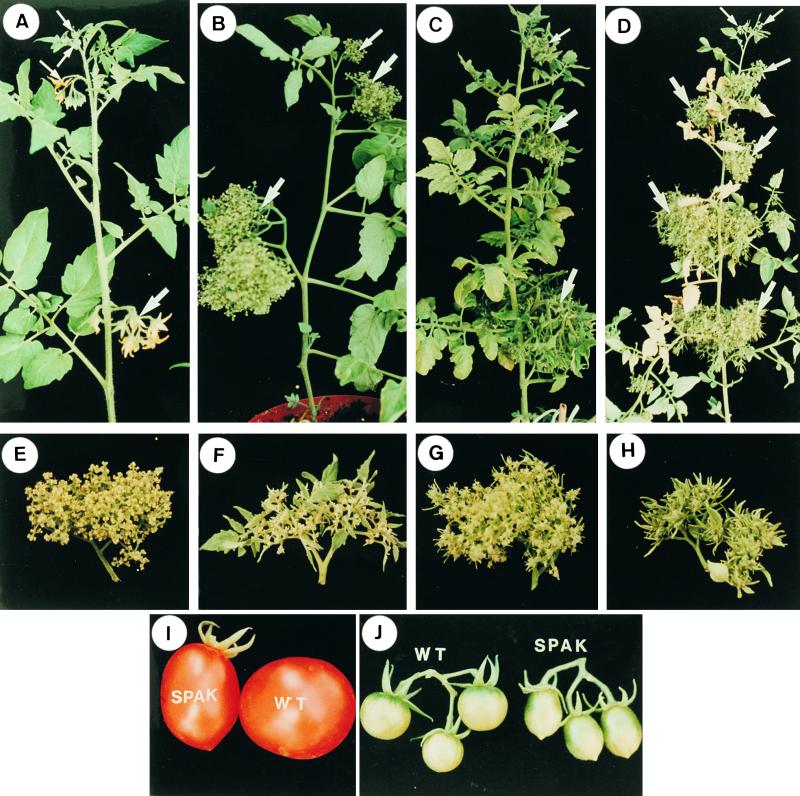Figure 5.
Overexpression of 14-3-3 genes in Determinate anantha Mutant Plants Mimics the Effect of Upregulation of SP.
(A) An indeterminate wild-type shoot. Four successive inflorescences spaced by three leaves each are indicated by arrows.
(B) A shoot from a progenitor determinate double mutant sp an plant. The shoot is terminated by two consecutive inflorescences (upper two arrows), which is the consequence of the sp mutation. The meristems in each inflorescence (arrows) proliferate, and all are arrested in a cauliflower-like stage (the effect of an).
(C) Overexpression of the SP gene in sp an mutant background. Note the increased number of leaves between inflorescences and the generation of leaves by the sp;an inflorescence meristems (arrows).
(D) Overexpression of the 14-3-3/2 gene results in the partial rescue of the mutant determinate habit of sp;an plants. Note the indeterminate pattern of the shoot (seven inflorescences are marked by arrows), and the two to three nodal leaves separating the inflorescence shoots.
(E) A single inflorescence of a progenitor, double mutant sp;an mutant. Meristems are arrested at the cauliflower-like stage, with no leafy primordia formed.
(F) Vegetative growth, that is, production of leaves in the sp;an mutant inflorescence of a plant overexpressing SP.
(G) Promotion of vegetative growth, that is, production of leaf primordia in the inflorescence of a sp;an mutant plant overexpressing 14-3-3/2.
(H) Leafy phenotype of the inflorescence of a sp;an mutant plant overexpressing 14-3-3/74.
(I ) and (J) Suppression of SPAK induces fruit elongation. (I) A regular size fruit of the VF36 line (right) and an elongated, pear shape fruit from plants expressing p35S::SPAK antisense RNA. (J) Round cherry tomato fruits (left) and elongated cherry fruits (right) from plants expressing a dominant-negative form of SPAK.

